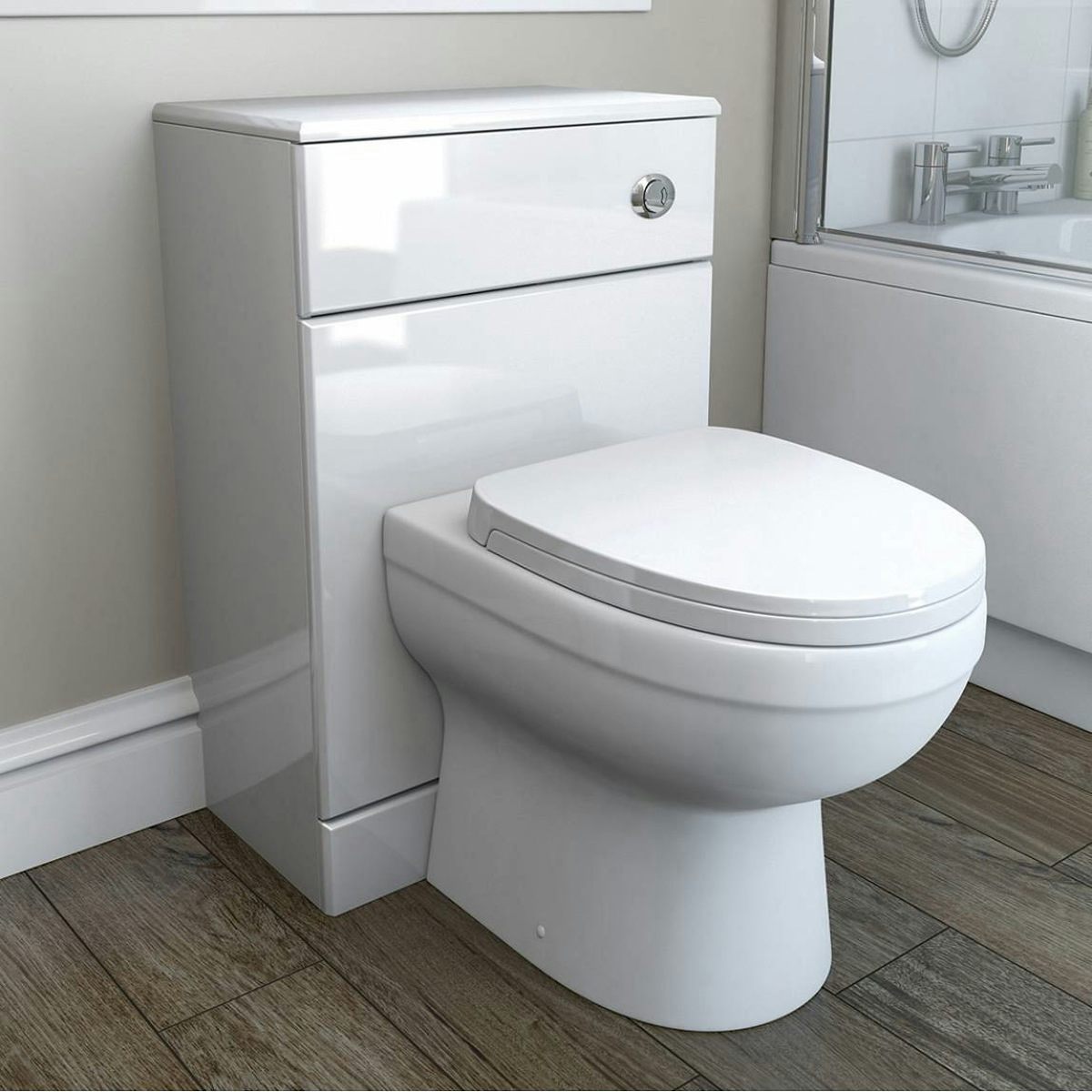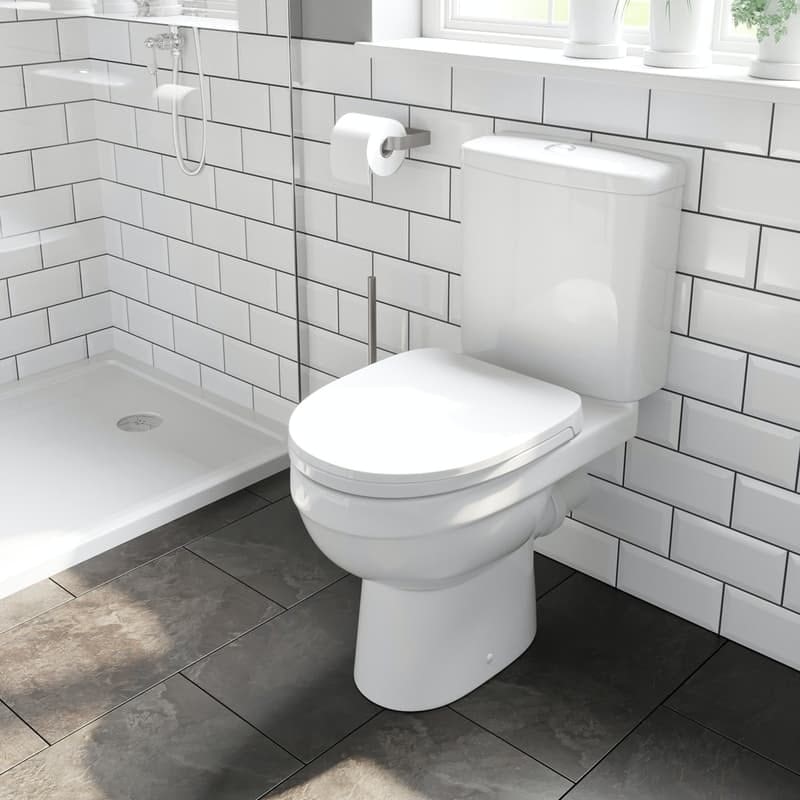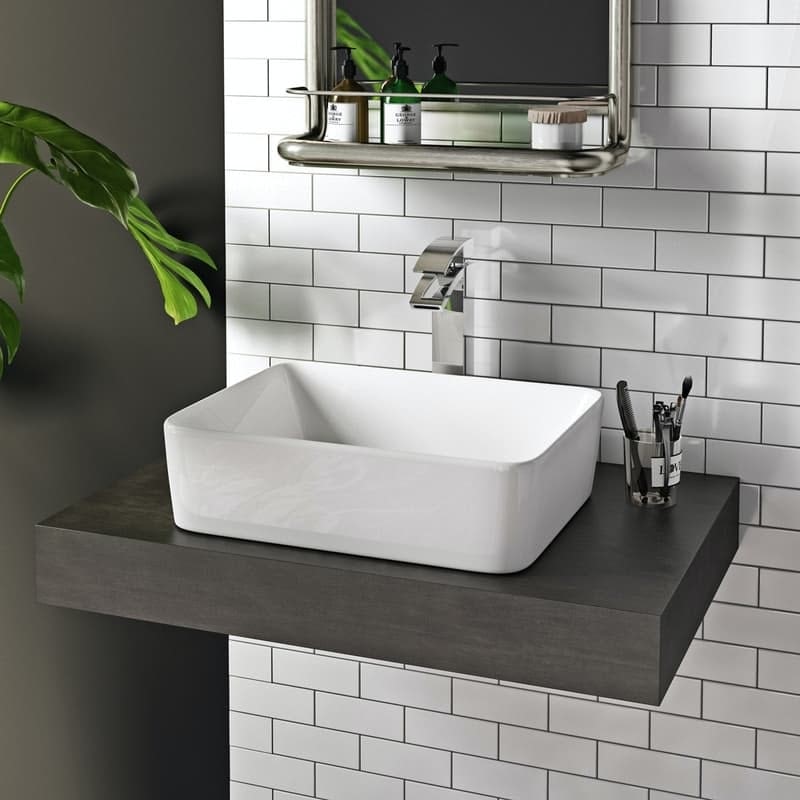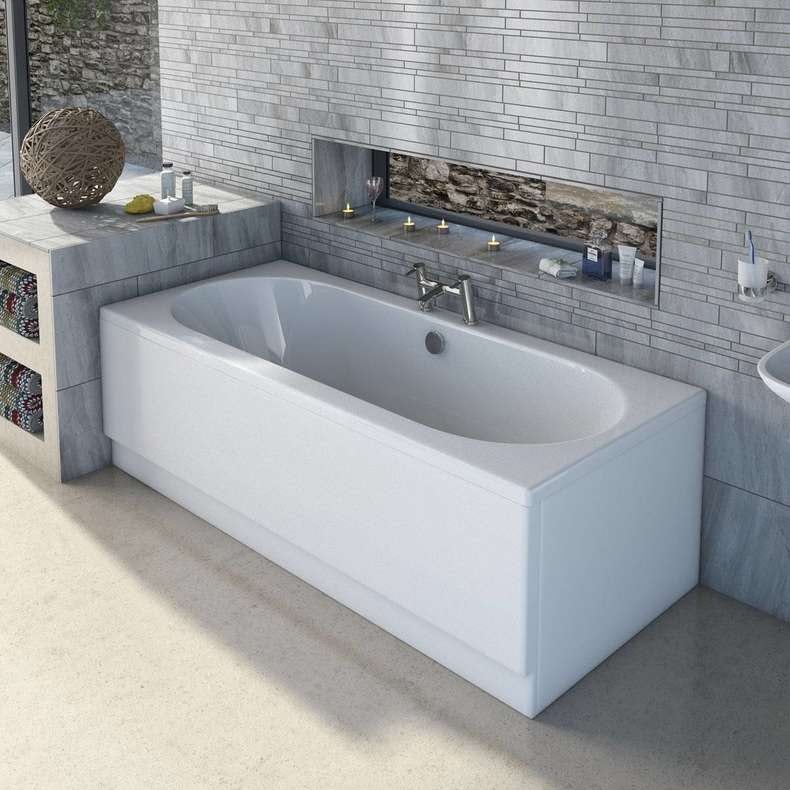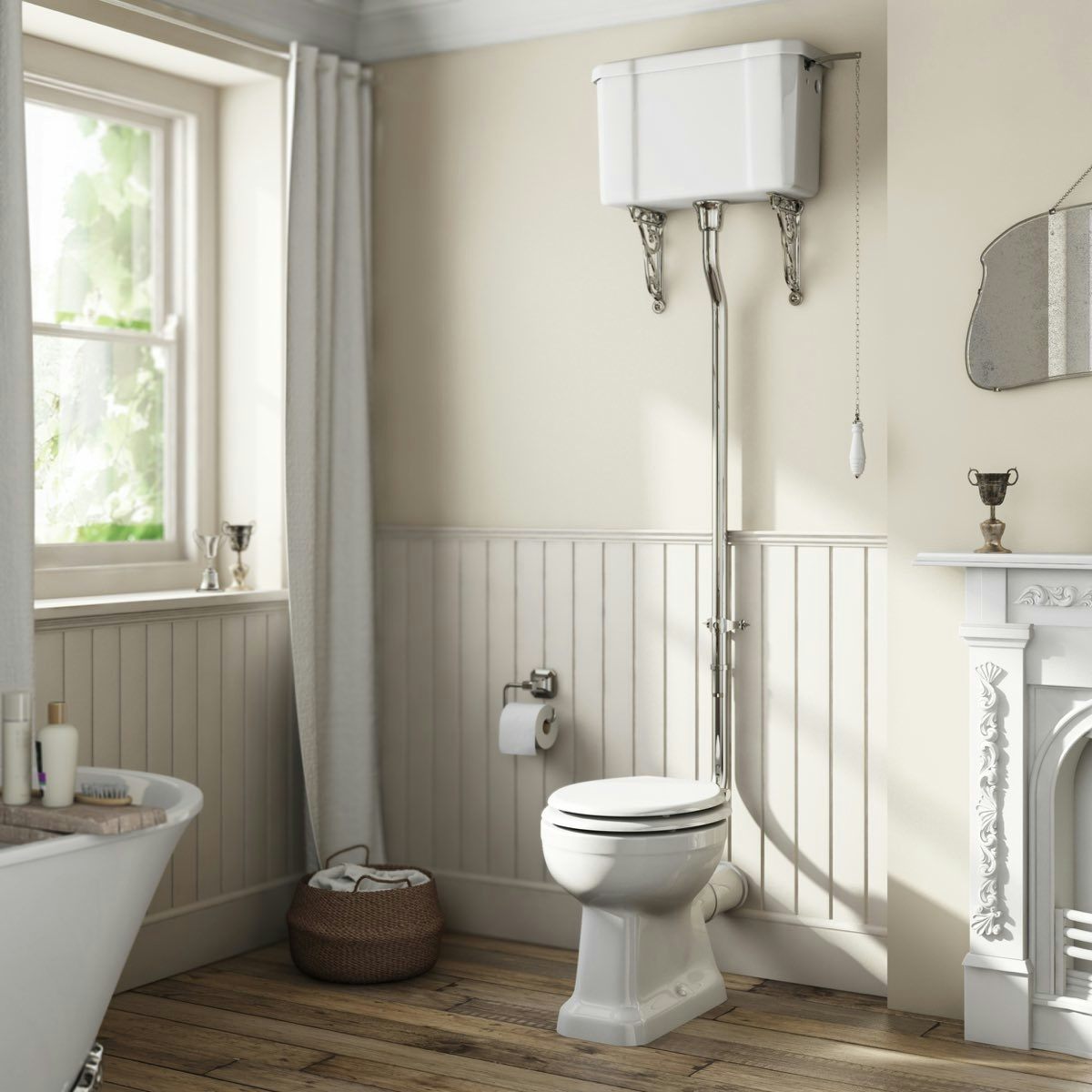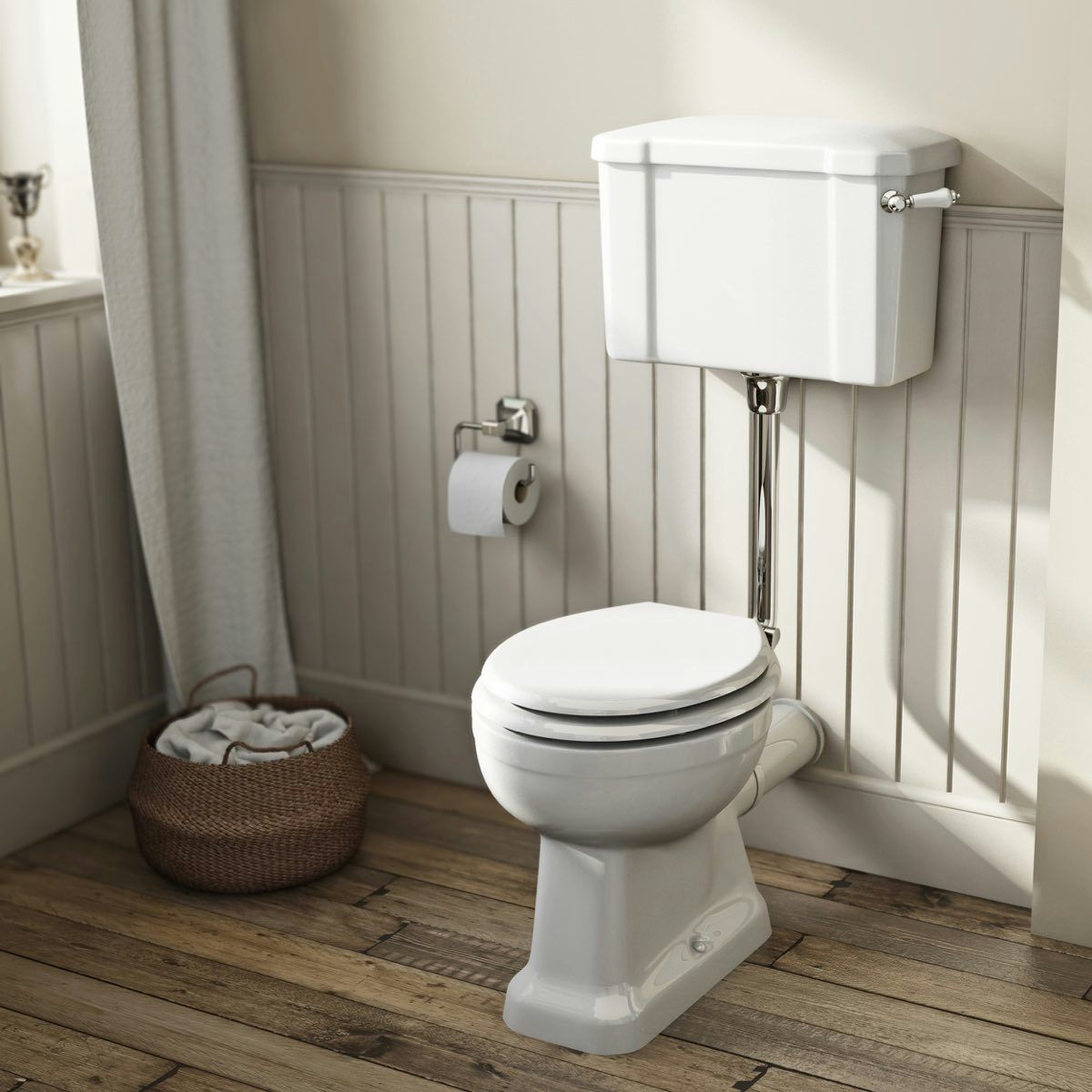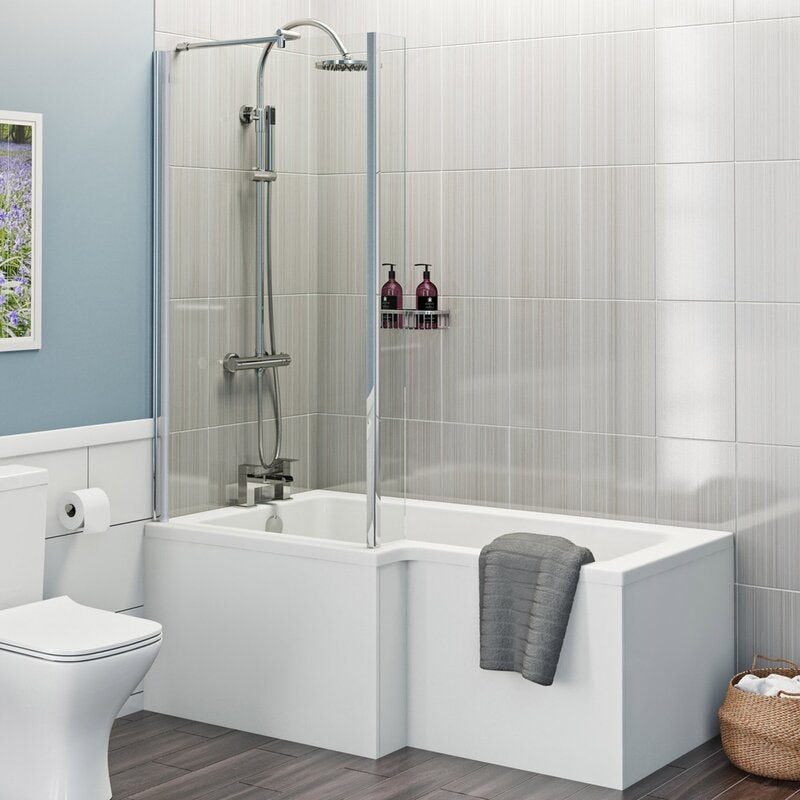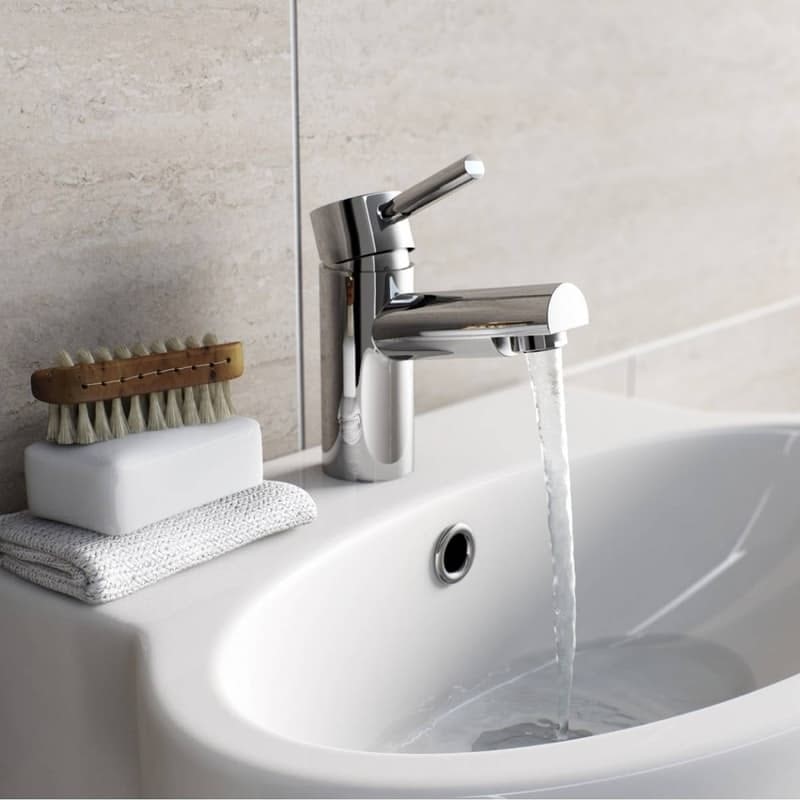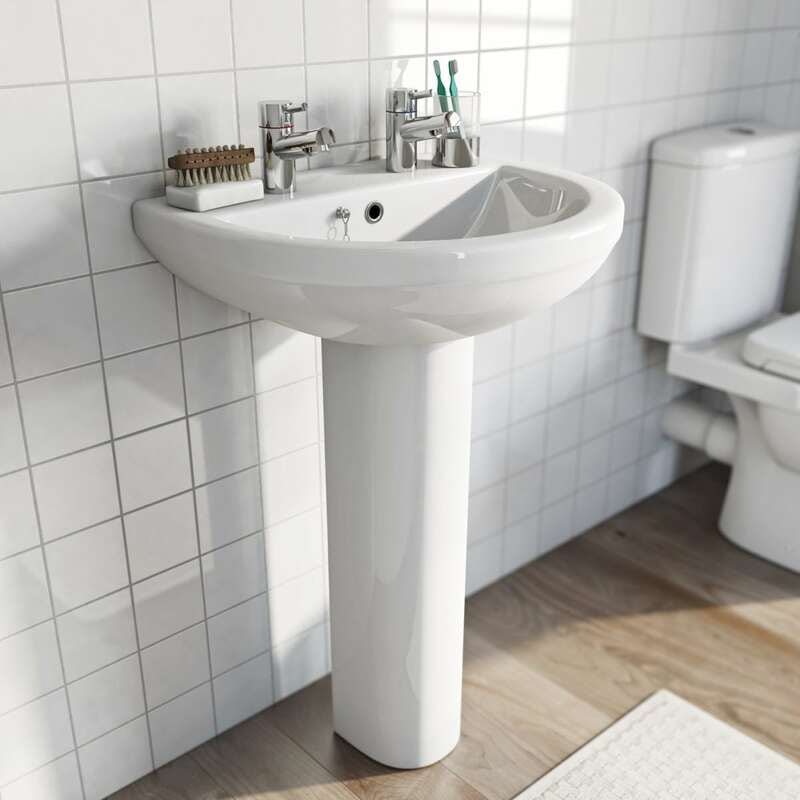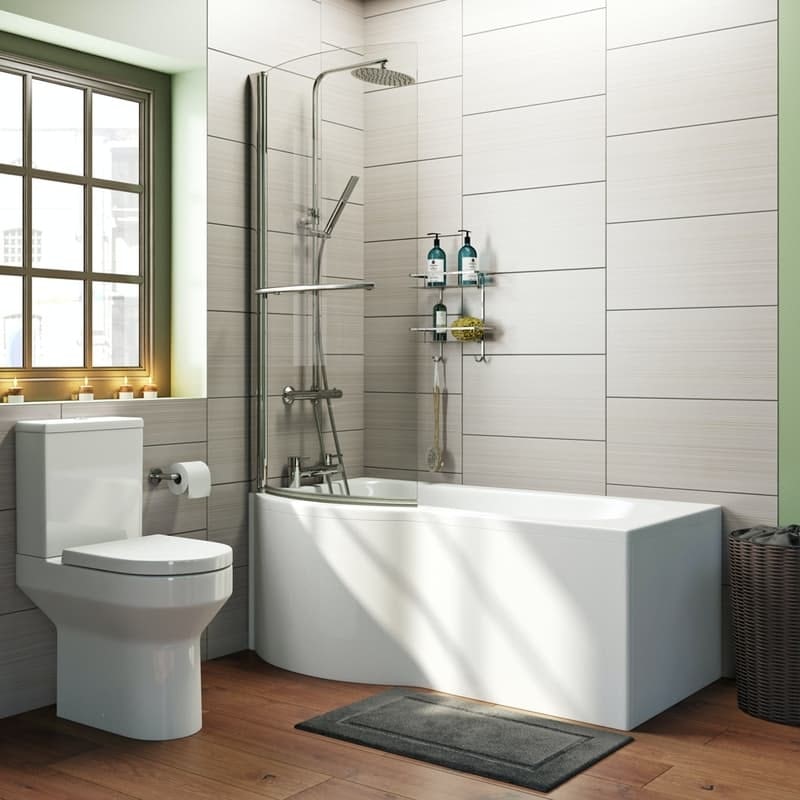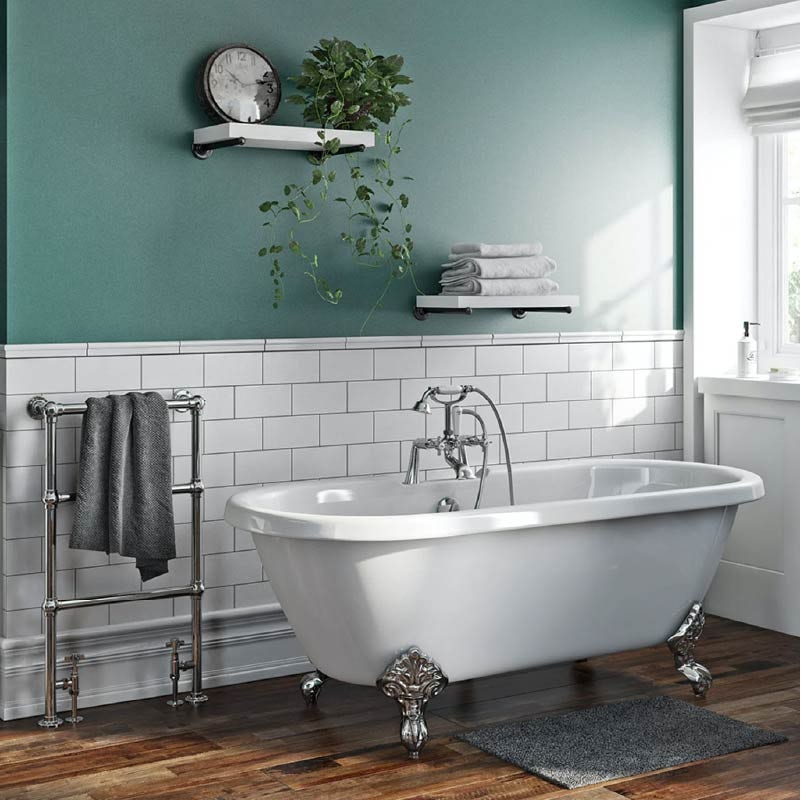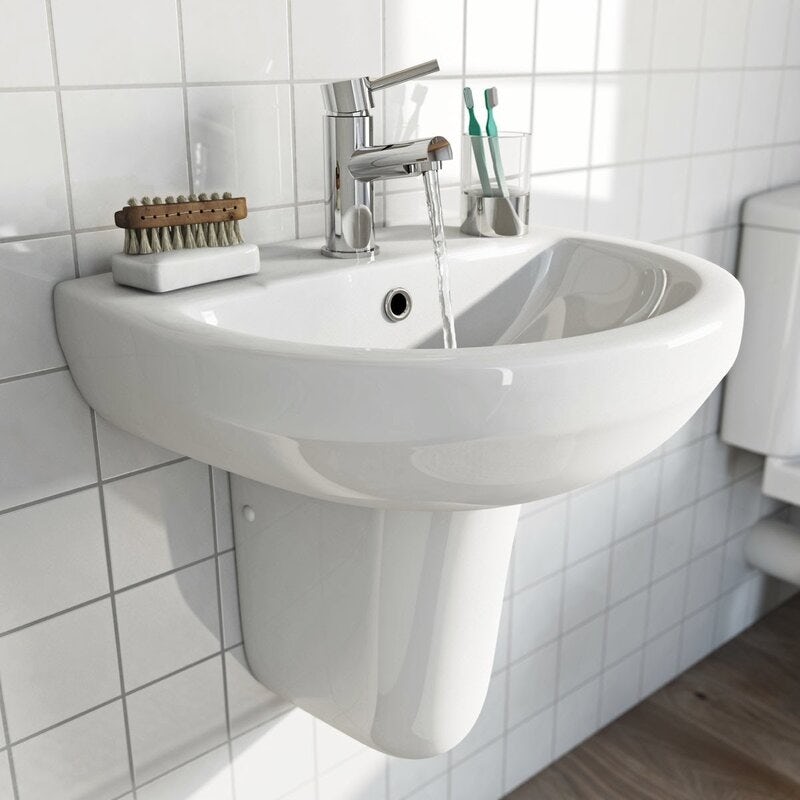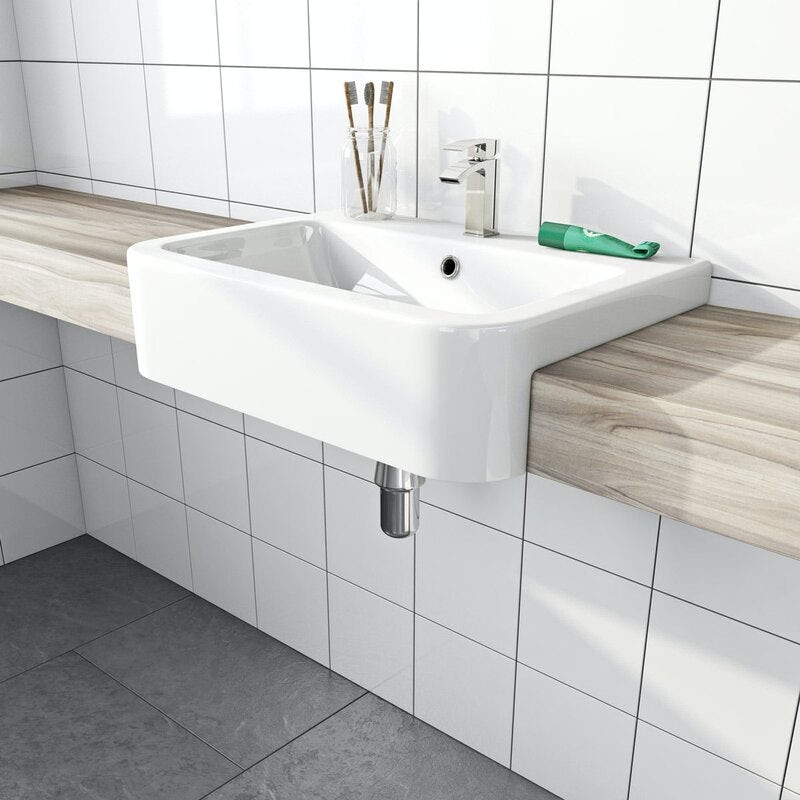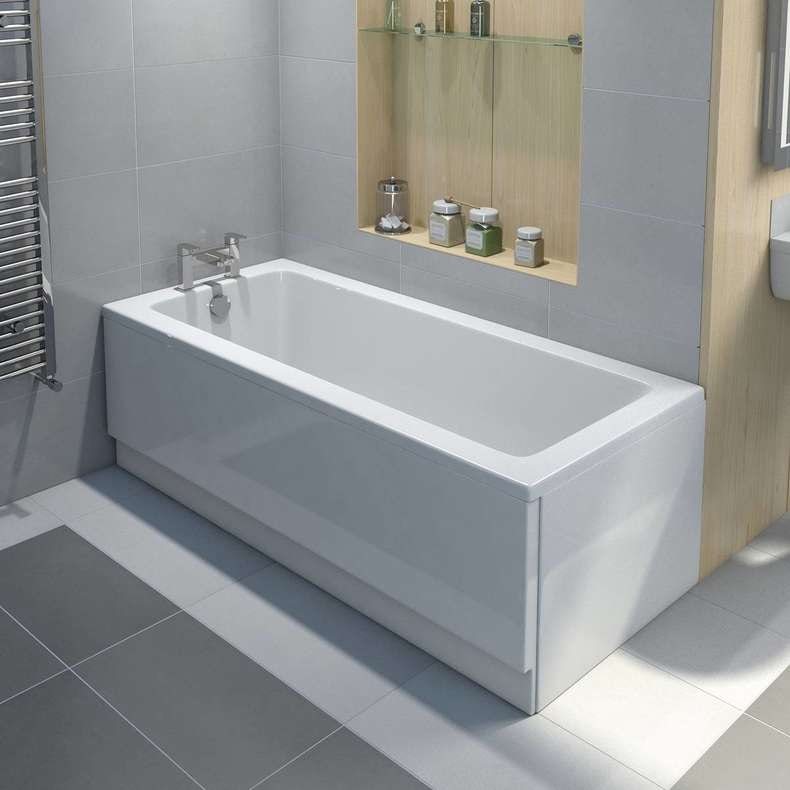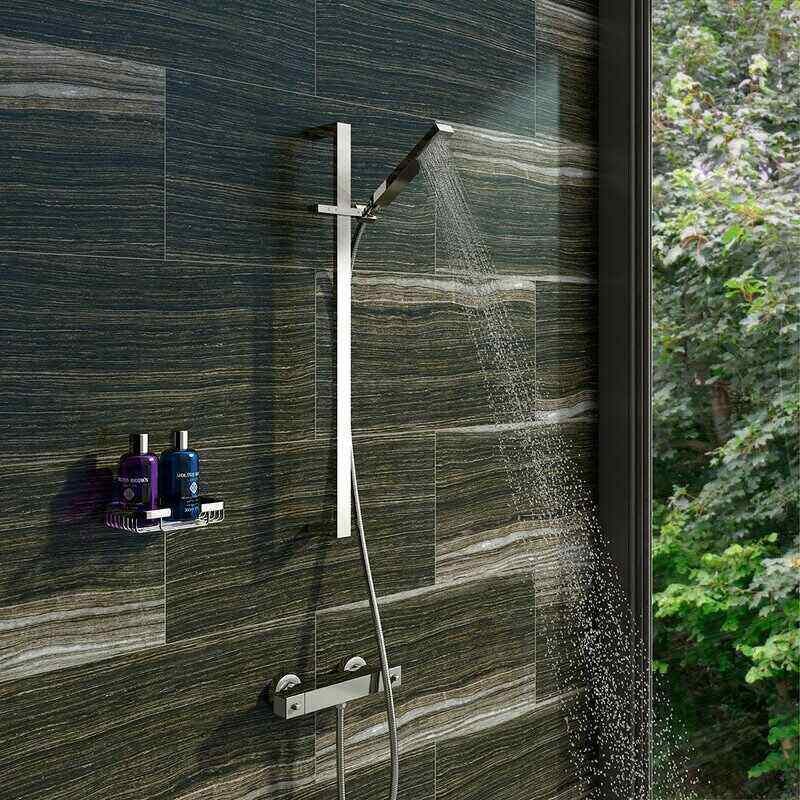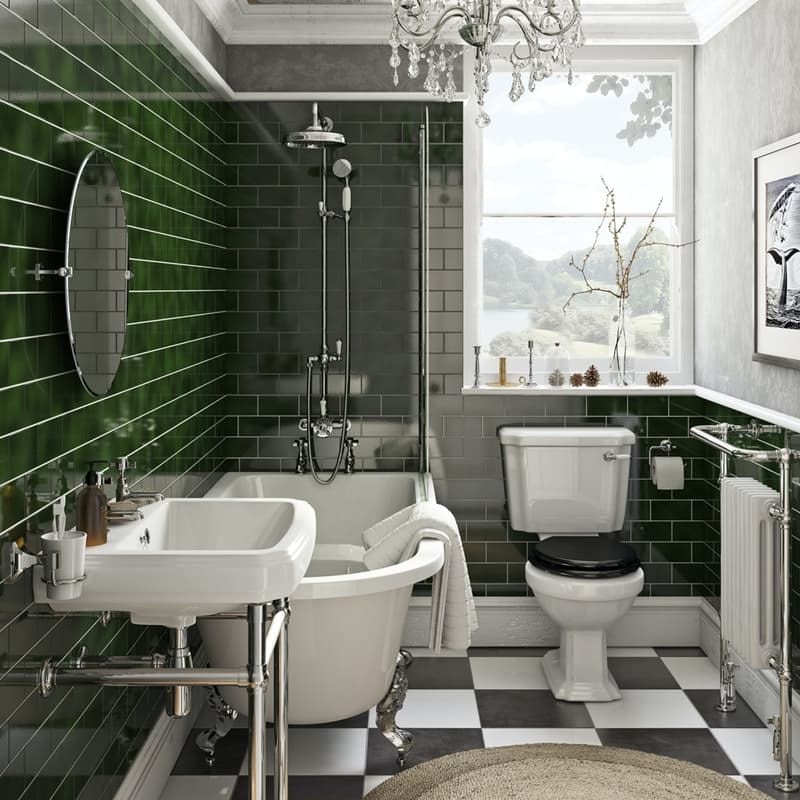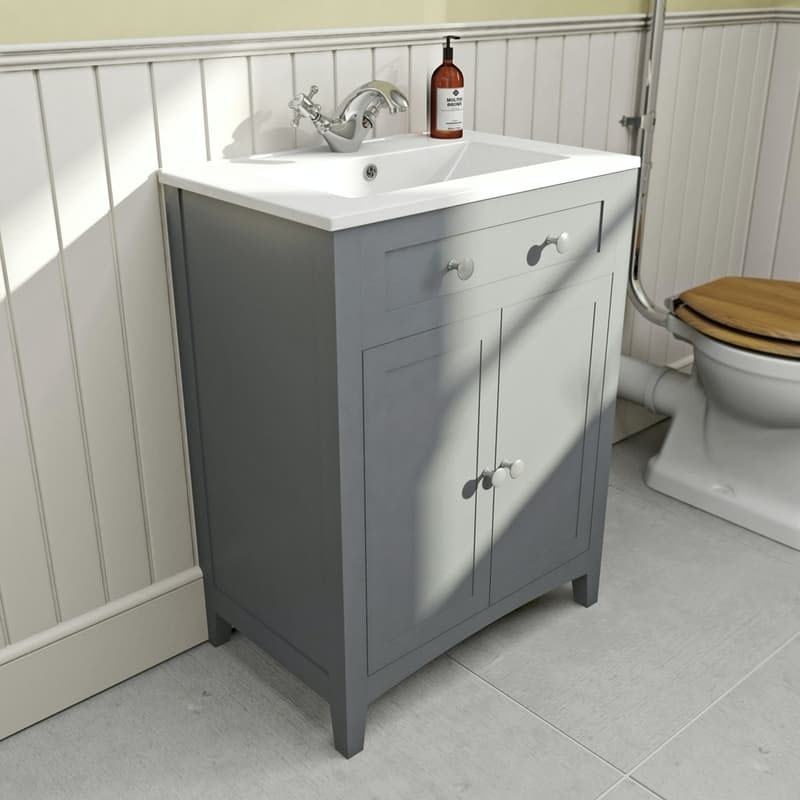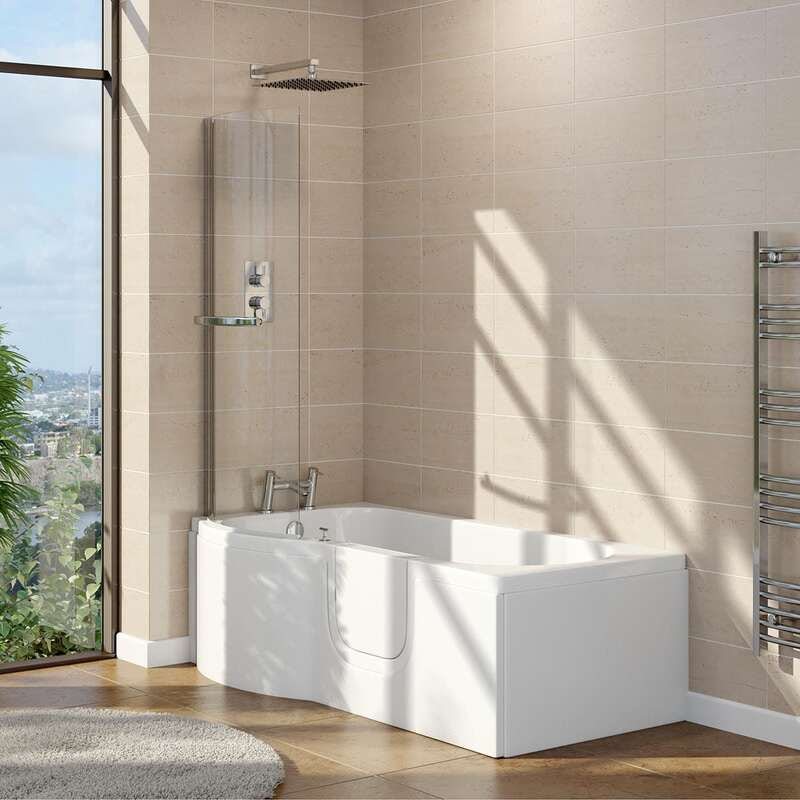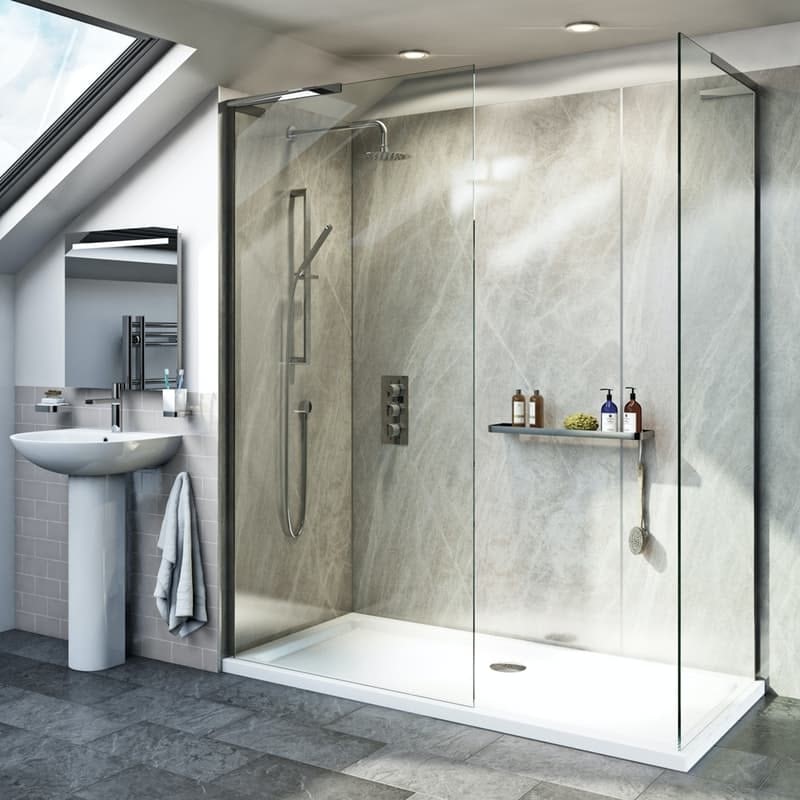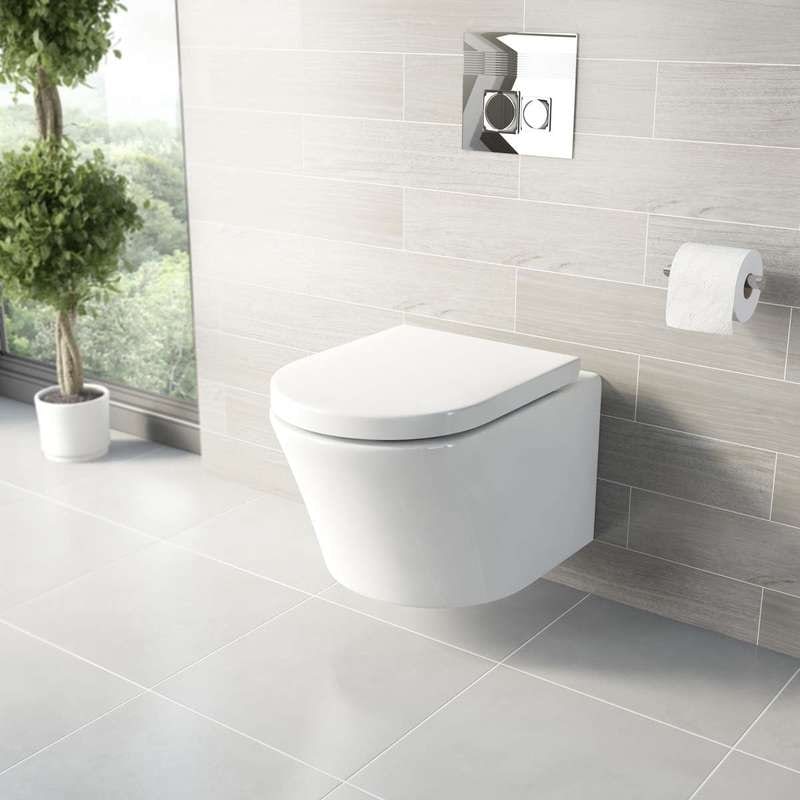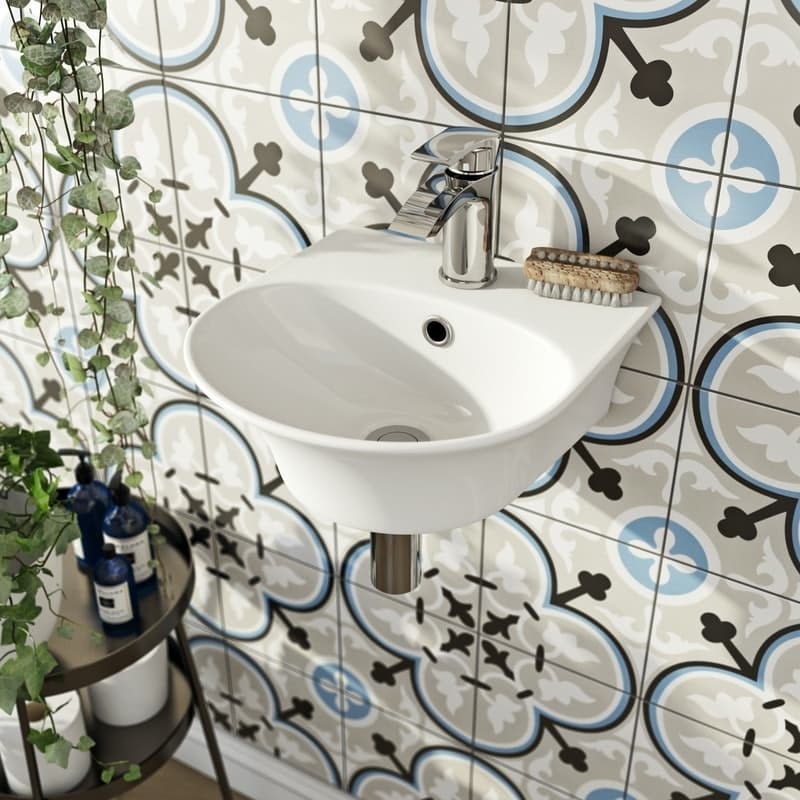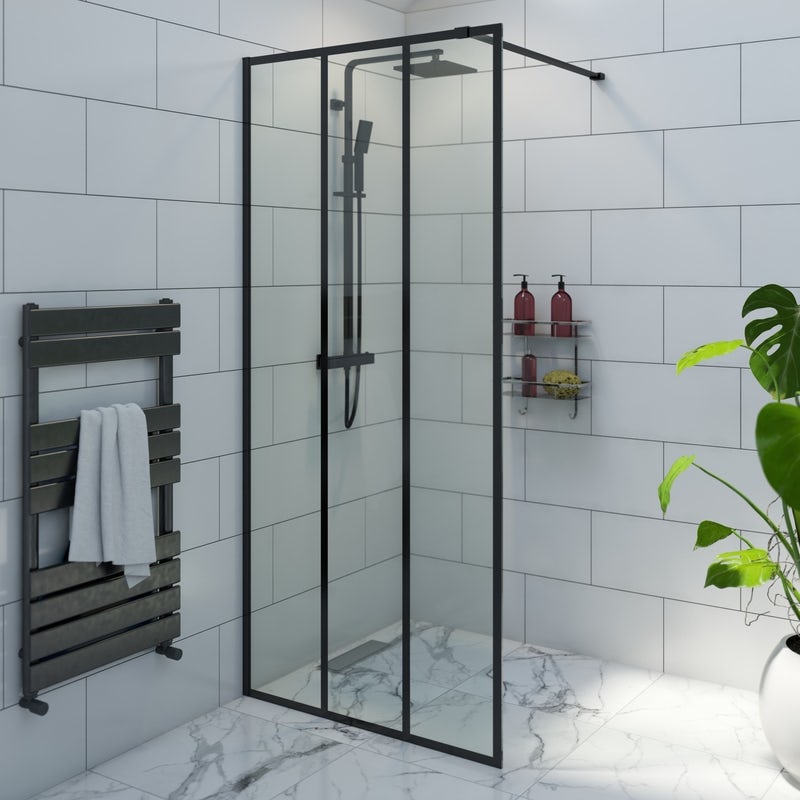DIY and plumbing jargon driving you round the bend? Find out what it means here…
Skip ahead by clicking on a letter below:
A B C D E F G H I J K L M N O P R S T U V W
A
ABS—A strong and rigid plastic material that combines the best qualities of Acrylics, Butyrate and Styrenes. It is commonly used in shower trays due to its durability.
Acrylic—A plastic material commonly used in baths. It’s easy to mould, stays warm to the touch and is highly durable, minimising staining or scratches.
Airlock—A blockage in a pipe caused by a trapped air bubble.
B
Back-siphoning—A potentially hazardous situation where water flows back into the mains water system, e.g. from a toilet, shower or hose.
Back to wall toilet—A floor mounted toilet where just the pan is visible. The cistern is usually concealed behind a wall or unit. (See image below)
Back to wall unit—A furniture unit used to conceal a cistern for a back to wall toilet. (See image below)
Ball cock or Float valve—A valve that controls the flow of water into a tank or cistern. The valve is operated by a ball that floats on top of the surface of the water, so when the water reaches a certain level, the flow is shut off.
Ball valve—A type of quarter-turn valve, which uses a pivoting, hollow ball to open or close flow through a pipe.
Bar—A unit of measurement for water pressure. 1 bar is equivalent to the force required to push water up to a height of 10 metres. E.g. To push water 1 metre requires 0.1 bar of pressure. Find out more about this in our guide to understanding water pressure.
Base coat—A flat coat of paint over which a layer of glaze is applied.
Batten-A narrow strip of wood, usually fixed to a wall or floor to act as a support for a unit or shelving.
Bevel—Any angle at which 2 pieces of wood meet, other than a right angle.
Body jets—Small shower heads that are usually set into a wall, designed to spray the body, as opposed to an overhead shower. (See image below)
Bore—The hollow part of a pipe.
Bottle trap—A type of trap used with basins. A bottom part can normally be removed for cleaning or maintenance.
BTU (British Thermal Unit)—The heating output required to heat a particular-sized room. It can be worked out using this equation: Room height x room width x room length (in feet & inches) = Total x 5 = BTU
Butt joint—A simple joint where two pieces of wood are fixed together with no interlocking parts cut in them.
C
Cam and stud fixing—A simple fixing used in flatpack construction.
Cap-nut—A nut used to tighten a fitting onto pipework.
Cavity wall—A wall made of 2 separate, parallel masonry skins with an air space between.
Ceramic disc technology—In taps, a ceramic disc is now used instead of old-style washers, needing only a quarter turn of a handle to turn the water flow on or off.
Chamfer—A flat, narrow surface along the edge of a workpiece, usually at a 45⁰ angle to any adjacent surfaces.
Chase—A groove cut in masonry or plaster for electrical cabling or pipework.
Chrome or Chrome plating or Chromium plating—A thin layer of chromium applied to a surface to help prevent corrosion and improve both appearance and maintenance.
Cistern—Normally found as part of a toilet, the cistern is a container designed to hold water at atmospheric pressure, used for the flushing system. Most commonly fitted with a float-operated valve.
Close coupled toilet—The most common type of toilet found in the UK, where the cistern is situated directly above the pan—“closely coupled” together—hence the name. (See image below)
Cold water storage tank or Header tank—Normally found in the loft, it’s a tank for holding water that feeds into a home water system.
Combination boiler or Combi boiler—A combined central heating and water heating unit used in homes. It doesn’t store hot water but heats water as and when required directly from the cold water supply.
Concealed cistern—A toilet cistern designed to be used with a wall hung or back to wall toilet, concealed behind a wall or unit.
Contemporary—A style of interior decorating that contains the latest styles and trends to give an up-to-the-minute look.
Counterbore—A tapered recess that allows the head of a screw or bolt to lie below a surface. Also to cut such a recess.
Countersink—To cut a tapered recess that allows the head of a screw or bolt to lie flush with a surface.
Countertop basin—A freestanding basin that sits on top of a vanity unit or countertop. (See image below)
Cup—To bend as a result of shrinkage. Usually referred to as across the length of a piece of wood.
D
Damp-proof course (DPC)—A layer of impervious material that prevents moisture rising through a floor or in a wall.
Double ended bath—A bath where the taps are situated on one side (so there is no “tap end”).
Drain-waste-vent (DWV) system—Plumbing that removes sewage and waste water from a building, whilst regulating air pressure within the pipes. Find out more about home plumbing systems.
Dual flush—A toilet cistern with the option of a smaller, water-saving flush or a full flush. These are most commonly 3 and 6 litres in volume. Find out more about how a dual toilet flush works.
E
Earth—A connection between the earth or ground and an electrical circuit. Also a terminal to which this connection is made.
Earth bonding—Required by law. All metal parts in a plumbing system must be connected to earth to prevent any electrical conduction. This can be achieved by using an earth bonding strap.
Electrical heating element—Used in electric showers to heat water as it flows through the unit.
Extension lead—A length of electrical flex for the temporary connection of an appliance to a wall socket.
F
Face edge—A woodworking term for a surface that is planed square to the face side.
Face side—A woodworking term for a flat, planed surface from which other angles and dimensions are measured and worked.
Fence—An adjustable guide to keep the cutting edge of a tool a set distance from the edge of a work piece.
Float valve or Ball cock—A valve that controls the flow of water into a tank or cistern. The valve is operated by a ball that floats on top of the surface of the water, so when the water reaches a certain level, the flow is shut off. Find out more about how a toilet flush works.
Freestanding—Furniture or units that are not built-in or fixed to a wall or floor.
G
Galvanised—Covered with a protective coating of zinc.
Gasket—A ring made out of rubber that seals the junction between two surfaces, e.g. between a toilet cistern and pan on a close coupled toilet.
Grain—The direction of wood fibres in a particular work piece. Also a pattern on the surface of timber made by cutting through the fibres.
Groove—A long, narrow channel cut in plaster or wood. In the latter, this follows the direction of the grain.
Grounds—Strips of wood fixed to a wall to provide nail-fixing points for skirting boards, etc.
H
Header tank or Cold water storage tank—Normally found in the loft, it’s a tank for holding water that feeds into a home water system. Find out more about domestic water systems.
Heating element—Can be used with radiators or heated towel rails to provide a source of heat, independent to a central heating system.
High level cistern—Where the toilet cistern is mounted on the wall, high above the toilet and connected to the pan with a long flush pipe. Usually found on traditional style toilets with a pull chain flush. (See image below)
Housing—A long, narrow channel cut across the general direction of wood grain to form part of a joint.
I
Insulation—Material used to reduce the transmission of heat or sound. Also a non-conductive material around electrical wires or connections to prevent the passage of electricity.
Isolating valve—A valve used to shut off water from a particular room or appliance, so you don’t need to turn off the entire water system.
J
Joist—A horizontal wooden or metal beam used to support a structure such as a floor, ceiling or wall.
K
Key—To roughen a surface to provide a better grip when it is being glued. Also the surface so roughened.
Knotting—Sealer, made from shellac, that prevents wood resin bleeding through a surface finish.
Knurled—On a knob or handle, a series of fine grooves impressed into an edge or surface to improve the grip when turned or handled.
L
Laminate—Two or more sheets of material bonded together, or the top waterproof sheet of the bonded sheets used as a work surface. Also to fix such sheets together.
Lintel—A horizontal beam used to support the wall over a door or window opening.
Lipping—A decorative strip applied to the side edges of laminated boards.
Low level cistern—Where the toilet cistern is mounted on the wall, a small distance above the toilet and connected to the pan with a short flush pipe. Usually found on traditional style toilets. (See image below)
L-shaped shower bath—A shower bath with a wider, square-shaped end for showering. Looks like an “L” from overhead. (See image below)
M
MDF—Medium-density fibreboard. A man-made sheet material that can be worked like wood and is used as a substitute for it. Often referred to as "engineered wood".
Mitre—A joint between two pieces of wood formed by cutting 45⁰ bevels at the end of each piece. Also to cut such a joint.
Mixer tap—A single tap which combines the hot and cold water flows. (See image below)
Modern—A style of interior decorating that contains elements that are clean and uncomplicated, and draws upon popular design from the 1920s–50s.
Monobloc tap—Another name for a mixer tap.
Mounting frame—Sits behind a wall and is used to secure a wall hung toilet to a wall.
N
Noggin—Horizontal reinforcing timber fixed between the vertical studs in a stud partition wall.
O
Outlet—See Shower outlet.
Overflow pipe—A pipe leading from a tank or cistern used to drain off excess water into an area that won’t cause damage in the event of a malfunction.
P
Pan—The part of the toilet that is also referred to as the bowl.
Pedestal basin—A basin that is attached to the wall and sits on top of a pedestal, which is used to conceal plumbing. The pedestal extends all the way from the basin to the floor. (See image below)
Pillar taps—Single taps which deliver either hot or cold water, but not both. (See image below)
Pilot hole—A small diameter hole drilled to act as a guide for a screw thread.
Power shower—A shower that uses an electric pump to boost the flow of water.
Primer—A coat of paint applied to wood or metal to seal it and act as a first coat.
Profile—The outline or contour of an object.
P-shaped shower bath—A shower bath with a wider, curved end for showering. Looks like a “P” from overhead.
PTFE—Tape made from polytetrafluorethylene, used to seal threaded plumbing fittings.
Pushfit connector—A plumbing connection that is simply pushed onto the pipes e.g. for connecting the toilet pan to the waste pipe.
R
Rebate—A stepped rectangular recess along the edge of a work piece, usually forming part of a joint. Also to cut such a recess.
Reveal—The vertical side of an opening.
Rising main or Riser—A pipe that supplies water under mains pressure, usually to a roof storage tank.
Roll top bath—A type of freestanding bath, usually with a rolled lip around the rim of the bath to help when getting in and out. (See image below)
S
Score—To scratch a line with a pointed tool.
Scribe—To copy the profile of a surface on the edge of sheet material to be butted against it. Also to mark a line with a pointed tool.
Semi pedestal basin—A basin that is attached to the wall and sits on top of a short pedestal that is also attached to the wall and used to conceal plumbing. The pedestal does not extend all the way to the floor. (See image below)
Semi recessed basin—A basin designed to fit into, but also overhang, a furniture unit. (See image below)
Single ended bath—A bath where the tap(s) are situated at one end. (See image below)
Shower bath—A multifunctional bath which can also be used with a shower. Specifically designed shower baths have a wider end in which to shower and come with a bath screen.
Shower outlet—Connects a shower hose to water pipes.
Shower slider rail kit—A shower where the height and position can be adjusted on a rail fixed to the wall. (See image below)
Shut off valve—Used to isolate the cold water feed into a toilet in case of any issues.
Silicone mastic—A non-setting compound used to seal joints.
Slotted waste—For use with basins that have an overflow hole. Find out which waste you need for your basin.
Soil pipe—A pipe that drains waste (water and sewage) from your toilet, basin or bath.
Soil stack—A vertical pipe that carries waste water from a property down into the sewer system.
Stack vent—A vent pipe that (on modern properties) extends to above roof height, to vent gases from the soil stack.
Stopcock—A form of ball valve used to control the flow of a liquid or gas e.g. your water mains.
Stud partition—A timber frame interior dividing wall.
T
Template—A cut-out pattern, made from paper, wood, metal etc, used to help shape a work piece accurately.
Thermoplastic—A tough plastic used in the construction of toilet seats. Remains warm to the touch.
Thermostatic mixer valve—Usually found on showers, this valve mixes hot and cold water to maintain a constant temperature.
Thermostatic radiator valve—A radiator valve that opens and closes automatically to maintain a set temperature.
Traditional—A style of interior decorating that contains classic, timeless elements, particularly from the Victorian and Edwardian periods. (See image below)
Trap—A bent section of pipe (below a bath, basin, etc) containing standing water to prevent smells from escaping back into a property.
TÜV—"Technischer Überwachungsverein" (English: Technical Inspection Association) are German businesses that provide product inspection and certification. If you see "TÜV approved" on a product, it has been tested and certified for use. Equivalent bodies in the UK include the WRAS (see below).
U
U-bend—A type of trap shaped like a U.
Undercoat—A layer or layers of paint used to cover primer and build up a protective layer before a top coat is applied.
Unslotted waste—For use with basins that have no overflow hole. Find out which waste you need for your basin.
V
Vanity unit—A furniture unit that contains storage and a basin. It can be floor mounted or wall hung. (See image below)
W
Walk in bath—Also referred to as an easy access bath, this type of bathtub comes with a door on the side, meaning no need to climb in and out of the bath. This type of bath is designed to be more accessible to elderly users or those with restricted mobility. (See image below)
Walk in shower enclosure—A shower enclosure without a door, but with a cleverly arranged set of panels to keep water in. (See image below)
Wall hung toilet—A toilet that is attached to a mounting frame behind a wall or unit, so the cistern is concealed and the pan is suspended above the floor. (See image below)
Wall hung basin—A basin that is attached to the wall, but has no pedestal. (See image below)
Waste—Connects a basin, bath or shower tray with a trap, allowing waste water to flow into the waste pipe. Can contain a plug hole and plug.
Wetroom—A waterproofed (“tanked”) room, normally designed with a drain and slight slope to the floor. Wetrooms often feature an open shower without the need for a shower tray. (See image below)
WRAS—The Water Regulations Advisory Scheme provides an approval scheme for a range of bathroom products, to ensure they use water efficiently and comply with Water Fittings Regulations.
Read our bathroom jargon buster?
For a more in-depth look at some of these terms, why not check out our bathroom jargon buster?

